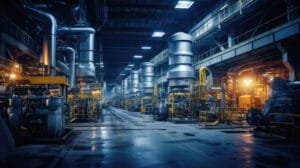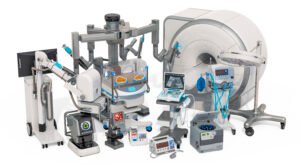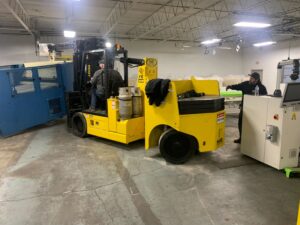In the dynamic landscape of industrial storage, the pursuit of cost savings is a perpetual challenge and a key driver for businesses seeking to optimize their operations. This article delves into the intricate world of the economics behind industrial storage solutions, exploring various strategies, technologies, and best practices that can unlock substantial cost savings for your organization.
Understanding the Capital Outlay
A comprehensive understanding of capital outlay enables businesses to negotiate better deals with suppliers, take advantage of bulk purchase discounts, and explore alternative financing options. Through strategic planning and budget allocation, organizations can also identify opportunities for cost optimization, preventing overspending and reducing financial waste.
Moreover, by forecasting and anticipating future capital needs, businesses can implement proactive measures such as preventive maintenance and technology upgrades, preventing costly emergency repairs or system failures. Overall, a well-informed approach to capital outlay fosters financial discipline, maximizes resource utilization, and contributes to long-term cost savings, ultimately bolstering the financial health and sustainability of the organization.
Assessing the Different Storage System Options
Assessing different storage system options can save money through careful consideration of factors such as scalability, efficiency, and technology trends. Firstly, evaluating scalability ensures that the chosen storage solution aligns with current needs while accommodating future growth, preventing unnecessary upfront investments or costly upgrades. Secondly, focusing on efficiency helps optimize resource utilization, reducing operational costs associated with power consumption, cooling, and physical space requirements.
Furthermore, staying informed about technology trends enables organizations to adopt cost-effective and innovative storage solutions. Embracing emerging technologies, such as cloud-based storage or software-defined storage, can lead to more economical and flexible options compared to traditional on-premises systems. Additionally, assessing the Total Cost of Ownership (TCO) of each storage option, including hardware, software, maintenance, and operational expenses, aids in making informed financial decisions.
Infrastructure Adaptations
Effective warehouse layout and design can contribute to cost savings in several ways. Here are some ways in which a well-designed warehouse can help save money:
- Optimized Space Utilization:
- Efficient warehouse layout ensures optimal use of available space, minimizing wasted areas and maximizing storage capacity. This can lead to reduced real estate costs.
- Improved Inventory Management:
- Well-organized warehouse layouts facilitate better inventory management, reducing the chances of stockouts or overstock situations. This helps in minimizing carrying costs and avoids unnecessary holding of excess inventory.
- Streamlined Processes:
- A well-designed layout can streamline the flow of goods, reducing the time and effort required to pick, pack, and ship products. This results in increased productivity and reduced labor costs.
- Enhanced Accessibility:
- Properly designed aisles, shelving, and storage systems make it easier for workers to access products, reducing the time spent searching for items. This can increase overall efficiency and decrease labor costs.
- Energy Efficiency:
- Thoughtful warehouse design can incorporate energy-efficient lighting, heating, and cooling systems, leading to lower utility costs over time.
- Minimized Material Handling Costs:
- An efficient layout can minimize the distance traveled by goods within the warehouse, reducing the need for excessive material handling equipment and labor. This can result in lower equipment maintenance costs and decreased fuel consumption.
- Flexibility and Scalability:
- A well-designed warehouse layout is adaptable to changing business needs and growth. This flexibility can help avoid the costs associated with frequent reconfigurations or the need for additional warehouse space.
- Improved Safety:
- Safety measures integrated into the design can reduce the likelihood of accidents and injuries, lowering associated medical costs, workers’ compensation claims, and potential legal liabilities.
- Optimized Transportation Costs:
- Proximity of shipping and receiving areas, as well as efficient loading docks, can reduce the time and resources required for transportation, potentially lowering shipping costs.
- Technology Integration:
- Implementing advanced technologies such as warehouse management systems (WMS), automation, and robotics can enhance overall efficiency, reduce errors, and minimize labor costs.
- Regulatory Compliance:
- Designing the warehouse layout with adherence to regulatory requirements can prevent fines and legal costs associated with non-compliance.
In summary, a well-planned warehouse layout and design contribute to operational efficiency, reducing costs related to space, labor, energy, and overall logistics. It enhances the overall competitiveness of a business by optimizing resource utilization and improving the bottom line.
The Role of Efficiency in Cost Reduction
Operational efficiency refers to the ability of an organization to utilize its resources effectively in order to maximize output while minimizing input. When a business or organization operates efficiently, it can lead to cost savings in various ways. Here are some ways in which operational efficiency can save money:
- Reduced Waste: Efficient operations often result in reduced waste of materials, time, and energy. This can lead to lower production costs and less expenditure on unnecessary resources.
- Streamlined Processes: Improved efficiency involves streamlining processes and eliminating unnecessary steps or redundancies. This can lead to faster production times, lower labor costs, and reduced errors.
- Optimized Resource Utilization: Operational efficiency involves optimizing the use of resources such as labor, machinery, and technology. When resources are used effectively, it can lead to cost savings by avoiding overstaffing or underutilizing equipment.
- Lower Operating Costs: By identifying and implementing more cost-effective methods of production or service delivery, operational efficiency can contribute to lower overall operating costs. This can include energy costs, maintenance expenses, and other day-to-day operational expenses.
- Improved Time Management: Efficient processes often result in quicker turnaround times. This not only improves customer satisfaction but also allows the organization to handle more tasks in less time, potentially reducing overtime costs and increasing overall productivity.
- Enhanced Quality: Operational efficiency is often associated with higher quality outputs. This can reduce the need for rework, warranty claims, or customer complaints, ultimately saving money by avoiding additional costs associated with poor quality.
- Better Inventory Management: Efficient operations often lead to improved inventory management, ensuring that the right amount of stock is maintained without excess. This can reduce carrying costs, the risk of obsolescence, and the need for discounts to move excess inventory.
- Technology Integration: Implementing technology solutions that enhance efficiency, such as automation or advanced analytics, can result in cost savings by improving accuracy, reducing manual labor, and increasing the speed of processes.
- Employee Productivity: Operational efficiency often involves training and empowering employees to perform their tasks more effectively. This can lead to increased productivity, reducing the need for additional staff and associated labor costs.
- Adaptability to Market Changes: Efficient organizations are often more adaptable to changes in the market or business environment. This adaptability can help avoid unnecessary expenses and capitalize on new opportunities more quickly.
Operational efficiency contributes to cost savings by optimizing resources, reducing waste, improving processes, and enhancing overall effectiveness in the organization’s activities. This, in turn, helps the organization operate more competitively and sustainably.
Automation Advantages
Automation can bring several advantages that contribute to saving money for businesses. Here are some ways in which automation can lead to cost savings:
- Increased Efficiency and Productivity:
- Automation can perform repetitive and time-consuming tasks faster and more accurately than humans. This leads to increased efficiency and productivity, allowing businesses to produce more with the same or fewer resources.
- Reduced Labor Costs:
- Automation can replace manual labor in certain tasks, reducing the need for a large workforce. While there might be an initial investment in automation technology, the long-term savings in labor costs can be significant.
- Minimized Errors:
- Automated systems are less prone to errors compared to human workers. This can result in cost savings by reducing the need for rework, waste, and the potential financial impact of mistakes.
- 24/7 Operation:
- Automated systems can operate 24/7 without the need for breaks, vacations, or shift changes. This continuous operation can increase output and revenue without a proportional increase in operating costs.
- Optimized Resource Utilization:
- Automation systems can optimize the use of resources, such as energy, raw materials, and equipment. This leads to reduced waste and more efficient resource utilization, ultimately saving money.
- Faster Time-to-Market:
- Automated processes can accelerate product development and delivery timelines. Getting products to market faster can result in a competitive advantage and increased revenue.
- Improved Decision-Making:
- Automation systems can provide real-time data and analytics, enabling better decision-making. Informed decisions can lead to cost-effective strategies and resource allocation.
- Reduced Downtime:
- Automation systems often have built-in monitoring capabilities that can detect issues early, preventing prolonged downtime. Minimizing downtime is crucial for maintaining a continuous workflow and avoiding financial losses.
- Scalability:
- Automated systems are often easily scalable. As the business grows, automation can handle increased workloads without a linear increase in costs.
- Compliance and Accuracy:
- Automation can help ensure compliance with regulations and industry standards. Avoiding fines and penalties associated with non-compliance contributes to cost savings. Additionally, accurate record-keeping can help in audits and legal situations.
While there are initial costs associated with implementing automation, the long-term benefits in terms of increased efficiency, reduced labor costs, and improved overall productivity contribute to significant cost savings for businesses.
Inventory Management
Effective inventory management can save money through several key mechanisms. Firstly, it helps prevent overstocking by maintaining optimal stock levels, reducing carrying costs, and minimizing the risk of obsolescence. This ensures that capital is not tied up in excess inventory, freeing up funds for other operational needs.
Secondly, inventory management enhances order accuracy and reduces the likelihood of stockouts. This helps in avoiding rush orders and emergency shipments, which are often more expensive. By having the right amount of inventory at the right time, companies can negotiate better terms with suppliers and take advantage of bulk purchasing discounts.
Additionally, efficient inventory management can lead to improved warehouse space utilization, lowering storage costs. It also aids in identifying slow-moving or non-moving items, allowing businesses to reevaluate their product offerings and make data-driven decisions to optimize their product mix.
Overall, by streamlining processes, minimizing carrying costs, preventing stockouts, and optimizing space, inventory management contributes significantly to cost savings and operational efficiency.
Ensuring Long-Term Viability
Ensuring long-term viability is a strategic approach aimed at optimizing resources and minimizing costs over an extended period. One key aspect is investing in sustainable practices and technologies that reduce operational expenses in the long run. Adopting energy-efficient solutions, for instance, can lead to substantial cost savings on utilities. Implementing robust risk management and contingency plans also protects against unforeseen financial challenges, preventing potential losses.
Furthermore, fostering innovation and staying abreast of industry trends can enhance competitiveness and revenue streams, ensuring financial stability. Long-term viability involves prudent financial planning, including budget forecasting and expense management, to avoid unnecessary expenditures. Building strong relationships with suppliers and negotiating favorable long-term contracts can secure cost-effective supplies and services.
Regular Maintenance Practices
Regular maintenance practices can save money in several ways, both in the short term and the long term. Here are some key ways in which regular maintenance can contribute to cost savings:
- Preventive Repairs:
- Regular maintenance helps identify and address potential issues before they escalate into major problems. Addressing small problems early on can prevent costly repairs later.
- Extended Equipment Life:
- Proper maintenance can extend the lifespan of equipment and assets. This means you won’t need to replace them as frequently, saving money on the costs of purchasing new equipment.
- Reduced Downtime:
- Scheduled maintenance minimizes unexpected breakdowns and downtime. This is crucial for businesses where downtime can result in lost productivity, revenue, and customer satisfaction. Avoiding downtime saves money by keeping operations running smoothly.
- Optimized Performance:
- Well-maintained equipment operates more efficiently. Regular maintenance ensures that machines are running at their peak performance, leading to energy savings and improved productivity.
- Energy Efficiency:
- Properly maintained equipment tends to be more energy-efficient. This can result in lower utility bills, contributing to cost savings over time.
- Compliance with Regulations:
- In certain industries, adherence to maintenance regulations is mandatory. Failure to comply can lead to fines and legal issues. Regular maintenance practices help ensure compliance, avoiding potential financial penalties.
- Safety Improvements:
- Regular maintenance includes safety checks and inspections. Addressing safety concerns proactively can prevent accidents and the associated costs, such as medical expenses, legal liabilities, and potential regulatory fines.
- Improved Resale Value:
- Well-maintained assets typically have higher resale values. If you decide to sell or upgrade equipment, you can get a better return on your investment by showcasing a history of regular maintenance.
- Inventory Management:
- Maintenance practices can help manage spare parts and inventory more efficiently. Knowing which parts are likely to fail and having them in stock reduces downtime and emergency expenses.
- Employee Productivity:
- Properly maintained tools and equipment contribute to a more comfortable and efficient work environment. This, in turn, can boost employee morale and productivity, positively impacting the bottom line.
Regular maintenance practices contribute to cost savings by preventing major repairs, extending the life of equipment, reducing downtime, improving efficiency, ensuring compliance, enhancing safety, and optimizing overall operational performance. While there are costs associated with maintenance, these are often outweighed by the potential savings in the long run.
Durability of Storage Solutions
Durability of industrial storage solutions plays a pivotal role in cost savings by ensuring longevity and minimizing the need for frequent replacements or repairs. Robust storage systems, constructed with high-quality materials and advanced engineering, withstand the rigors of industrial environments, reducing the risk of wear and tear.
Investing in durable storage solutions translates to lower maintenance and replacement costs over time. With reduced downtime due to equipment failures, businesses can maintain uninterrupted operations, maximizing productivity. Additionally, durable storage solutions often come with warranties or extended lifespans, offering long-term reliability and peace of mind.
Conclusion
Summing up the key insights from the exploration of the economics of industrial storage solutions, this section reinforces the importance of a holistic approach to cost savings. By understanding the initial investment, focusing on operational efficiency, and prioritizing maintenance and longevity, businesses can unlock significant economic benefits while optimizing their industrial storage systems.
This comprehensive guide aims to provide a nuanced understanding of the financial aspects associated with industrial storage solutions, empowering businesses to make informed decisions that not only enhance efficiency but also contribute to long-term cost savings.

















